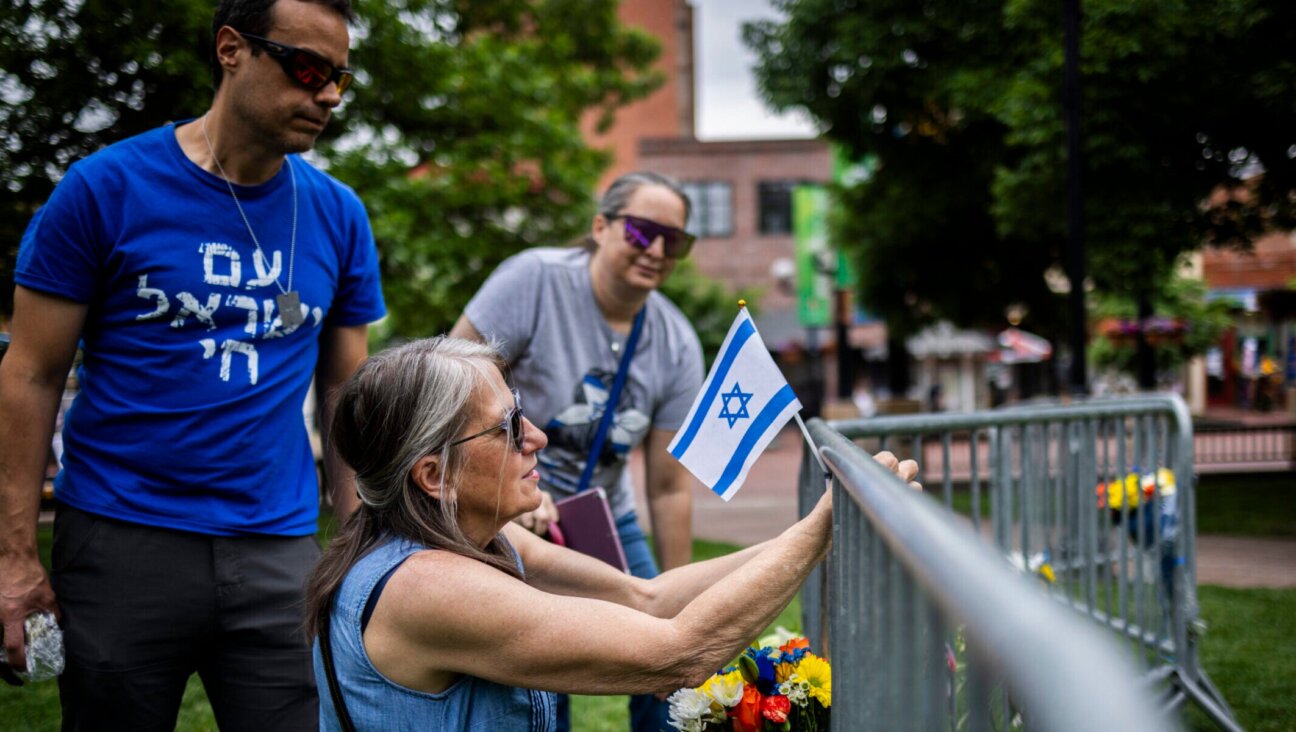Why California just gave the 100 year-old Breed Street Shul $15 million

Graphic by Angelie Zaslavsky
A crumbling synagogue in a neighborhood long ago abandoned by the Jewish community just received millions of dollars from the State of California. At a time when the state faces urgent needs for affordable housing, homeless services and drought relief, you might ask: “A synagogue?”
On Aug. 10, the Breed Street Shul Project announced that California’s recently passed 2021 budget includes a $14.9 million allocation for the restoration of the historic Breed Street Shul in the Boyle Heights neighborhood east of downtown Los Angeles.
Supporters of the largesse say the money will pay for much more than the rehabilitation of an old shul.
The money, said Stephen Sass, president of the Breed Street Shul Project, will not only renew a “culturally iconic historic” building but will spur collaboration among the Jewish, Latino and other minority communities in Boyle Heights and throughout the city.
“It will be a truly transformative project,” he said.
At a press conference held Tuesday outside the fenced-off shul, Sass said the newly announced funds – which will be allocated to the Breed Street Shul Project through a fiscal agent, as is the case with these kinds of state allocations – will help turn the long-shuttered property into a multipurpose social service and cultural space, one featuring a shared workspace for nonprofit organizations; a performance and events venue; and an exhibit and gallery space focused on the shul’s unique history and Boyle Heights’ diverse heritage.
“The building has so much extraordinary potential and need of an infusion of resources, so it felt like the right time to make a push,” said California State Assemblymember Jesse Gabriel, who helped lead the effort to secure state funding.
Another good reason for the windfall? California has money— a historic budget surplus estimated at $75.7 billion has given legislators a chance to cross some items off their wish lists.

From left: Assemblymember Jesse Gabriel (at lectern) was one of several elected officials and community leaders at a press conference on Aug. 10 announcing a $14.9 state grant to the Breed Street Shul restoration. Courtesy of the Office of Assemblymember Jesse Gabriel
The Breed Street Shul Project was one of many organizations to receive grants from the state in the 2021 budget. The state went from a “massive deficit to a really big surplus due to higher than expected revenues, and we’re trying to bring money to the organizations that support our communities,” said Gabriel, who is the chair of the California Legislative Jewish Caucus.
The Breed Street Shul, also known as Congregation Talmud Torah, was once the largest Orthodox congregation west of Chicago. Today its 18,000-square-foot Byzantine revival structure with a Jewish star above its main entrance is a remnant of a bygone time, a period from the 1920s to the 1950s when Eastern European Jewish immigrants populated the area alongside Latino, Japanese, and Black working-class neighbors.
During the post-World War II era, Los Angeles Jews began migrating west toward the Fairfax district and to the San Fernando Valley, and Boyle Heights became a largely Latino neighborhood.
In the 1980s, the Breed Street Shul fell into disrepair, a result of the 1987 Whittier Narrows earthquake as well as of neglectful stewardship of an Orthodox rabbi who took control of the building.
After wresting control of the building in 1999, the Breed Street Shul Project attempted for years to garner support for restoring the synagogue and transforming it into a community center for the surrounding population.
To Sass and others, Breed Street Shul is a symbol not of an ethnic enclave, but of a diverse community that serves as a model of American democracy.
Boyle Heights shows that “multi-ethnic communities are the norm in the United States,” George J. Sánchez, author of “Boyle Heights: How a Los Angeles Neighborhood Became the Future of American Democracy” (UC Press, 2021). said in a public conversation with the Forward. “Sometimes that’s hidden from us right when it’s in front of us.”
In 2001, the building, whose dilapidated interior is adorned with rare frescoes of the Zodiac, was named to the National Registry of Historic Landmarks.
In advocating for the funding, Gabriel, whose 45th district includes much of the west San Fernando Valley, worked with Assembly Member Miguel Santiago, whose 53rd assembly district includes parts of Boyle Heights.
The two met years ago at an interfaith Passover seder at the Breed Street Shul’s Talmud Torah. Built in 1915, the structure behind the main synagogue served as the shul’s original home and for several years now has accommodated community programming. The main building – the Byzantine structure – has required more extensive repairs and fundraising efforts.
Gabriel said the approval of the funds provided a rare opportunity for unity during divisive times.
“At a time in our politics when a lot of folks want to divide us, we have to be intentional about creating places for people to come together,” he said. “And this is a spot that is going to serve as a bridge and a meeting place for communities to come together.”






















